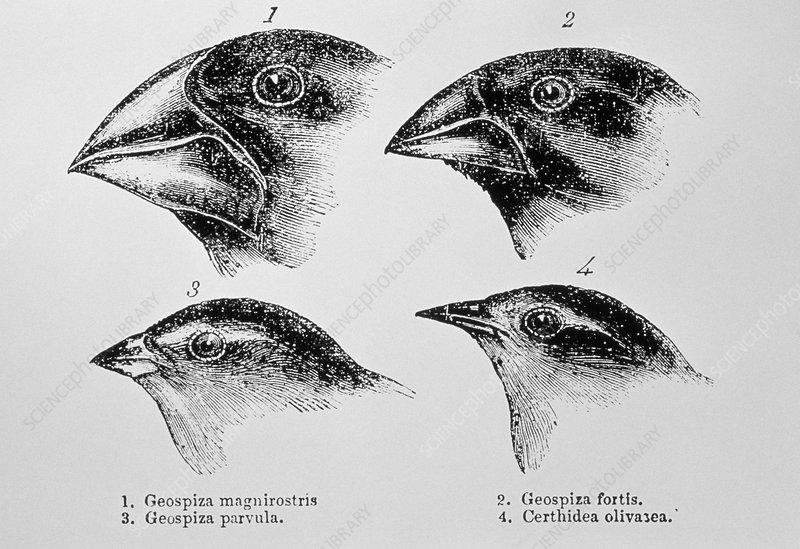Created by Deidre Brown on Wed, 09/29/2021 - 22:16
Description:
Among the most famous works of Charles Darwin is his sketch of four variations in finch beaks from Darwin's On the Origin of Species. Darwin's observations on the variation of beaks on finches allowed for the first theory of evolution that Darwin wrote about in his book. Darwin found that finch beaks differed depending on the type of food available to the finch itself, and used this sketch to depict some of those different beaks. Though Darwin's sketch shows four different variations in finches, he actually observed 13 different species variations that are now known as Darwin's Finches (the 13 different species and their descriptions can be found at https://galapagosconservation.org.uk/wildlife/darwins-finches/).
Sarah Ludwin-Peery wrote an article on Yale Scientific titled "Returning to Darwin's Finches: A genetic explination for his observations of bird beaks" that explains the importance of Darwin's research with finches. Ludwin-Peery writes this on why Darwin's finches are relevant to his theory:
Darwin’s classic book On the Origin of Species features many illustrations of the various beak types of finches. Some beaks were more adapted to eat fruits, while others were better for eating seeds. In examining these differences, Darwin conjectured that different beaks were borne from the selective pressures of different ecological niches. This examination of closely related but distinct species helped him understand evolutionary pressures and speciation, two critical points in his theory of evolution.
Ludwin-Peery's article: https://www.yalescientific.org/2015/03/returning-to-darwins-finches-a-genetic-explanation-for-his-observations-of-bird-beaks/
Copyright:
Associated Place(s)
Part of Group:
Featured in Exhibit:
Artist:
- Charles Darwin


